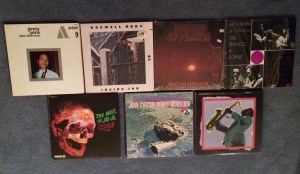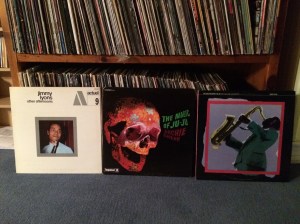Some stories coalesce properly, their meaningful themes presented intelligently, their aims met, their pacing expertly handled. Such stories have a powerful reason for being.
And then there are those stories that don’t have any good reason for being at all, such as the one I’m attempting to bang out right now. Holy crap, sweat beads are pouring from my brow, straining so hard am I to create product out of the thinnest threads of inspiration. My editor, Edgar Reewright, whom you possibly might recall from his previous appearances on these pages (click here and also here, for instance), couldn’t believe how low I was reaching when I tried to convince him that it didn’t matter if I published a pretty pointless article, considering that an infinitesimally small percentage of the human population ever reads anything I pen anyway.
“Edgar,” I said to him over the phone recently, “I’m shit out of decent story ideas. But I have to publish something, you know. Can’t let too many days elapse between articles, right? Right.”
And then I quickly summarized for him what I had in mind. I was met with dead silence for 15 seconds after I stopped talking. Finally Edgar spoke.
“Neil, you’re out of your friggin’ skull if you green-light this piece. It’s ridiculous. It’s dumpster-worthy. I want no part of it. You’re on your own with this one, cowboy.” And he hung up. Brusquely.
I took a deep breath. Tried to steady my nerves. And decided that, yes, the next day (February 11) I would proceed with my plan by beginning the writing process. Which is what I’m doing right now, as today indeed is the 11th. On what date I’ll complete the opus and punch the Publish button, I can’t say yet. But it will, of course, be well before Hell freezes over, unless that event occurs within the extremely near future.
The saga began a few hours before I dialed Edgar’s phone number. I was sitting on my living room sofa, trying to come up with something to write about, when I picked up The Philadelphia Inquirer’s sports section and began perusing the box scores of the previous day’s National Basketball Association (i.e., professional) games. In the distant past, when I was one of the way too many sports fanatics stomping around on our blue planet, I not only read the box scores every day during the pro basketball season, I also knew who just about every player was. My fanaticism having dissolved long ago, these days I’m familiar with maybe one out of six basketballers. But I continue to read the box scores nonetheless. What, like I have anything better to do?
Lo and behold, when I reached the final box score on the page, a synopsis of the February 9 game between the Houston Rockets and the Denver Nuggets, my eyes were drawn to an oddity in the Houston listings. What the listings contained was something I can’t remember ever coming across before during the countless hours I’ve spent in my life studying box scores from various sports. To wit, the final three surnames listed for Houston, meaning the gentlemen who were the last three to enter the game for the Rockets, were Green, Black and Brown. Wow! Three colors in a row! I had no idea who the players were (it turns out that their first names, respectively, are Gerald, Tarik and Markel), but that didn’t matter. What did matter was that I, story idea-wise, now had something to work with. Colors would lead me to good places I naively assumed.
Maybe, I mused, I’ll package the green/black/brown coincidence with a discussion of my favorite colors then and now (yellow when I was a kid, blue in my adulthood), some thoughts on the insanely huge numbers of colors described and displayed in Wikipedia articles (click here, here and here to see them), and somehow bring the proceedings to a tuneful conclusion with entertainment by musicians whose names are those of colors.
But on second thought all of that seemed too much, too ungainly. What, after all, do I have to say about the infinity of colors out there? Not a whole lot, except that it’ll drive you crazy when you’re trying to decide which color to choose for your living room or bedroom walls. Too damn much choice, as is the case with nearly everything nowadays.
And so I was left with music. Poor, pitiful me. Down to the dungeon I lumbered. It is there that I store my vinyl album collection, not to mention my world-class collection of pet spiders. I’ve got about 1,000 albums in all. And about 700 spiders. I’d decided to search for color names among the vinyl platters, which hold a nostalgic and esthetic spell over me, rather than from my sizeable trove of CDs. That’s because vinyl album covers have a whole lot more charm than their CD counterparts.
On the way down the stairs I further decided that I wanted color names that were surnames, not first names, in order to continue the pattern established by Monsieurs Green, Black and Brown. And I didn’t want to duplicate the colors already taken by the basketball guys. Thus, Red Garland (jazz pianist) and Pink Anderson (blues singer and guitarist) were out, as were James Brown, Jackson Browne and Al Green.
Patient readers, let me cut to the chase. I found only three musicians who met my goofy criteria. I selected one album by each. The musicians were jazz artists. I use the past tense because all of them, sadly, are gone. Only one (Horace Silver) is fairly well-known to the general public. The other two, Don Cherry and Michael White, decidedly aren’t, especially White. Silver, a prolific composer and hard-working band leader, played straight-ahead jazz. Cherry, one of my musical heroes, was an adventurer. His trumpet forays often would blister the atmosphere. White, who wielded an electric violin, possessed a mindset somewhat similar to Cherry’s. As a side note I’ll add that Horace and Don were major talents. Michael was good, but certainly not great.
Here then are three YouTube videos. Each offers a track from one of the albums whose front covers I’ve ever so lovingly photographed for this article.
A basketball box score. And three weirdly-chosen musicians. Yup, that’s what this story is all about. Don’t say I never did anything for you.
(Don’t be shy about adding your comments or about sharing this story on Facebook, Twitter and their ilk. I thank you.)



